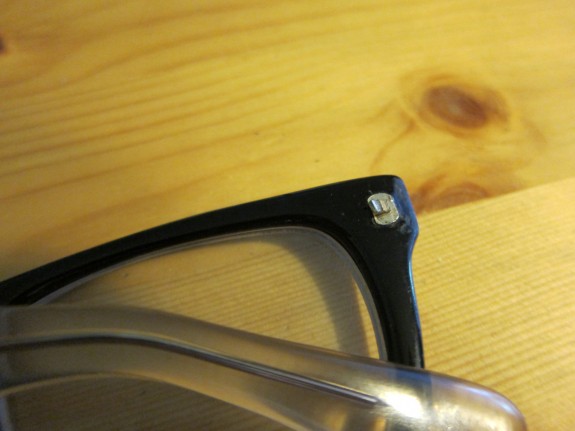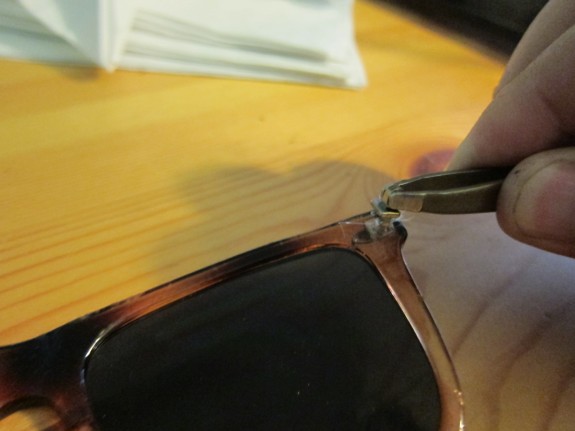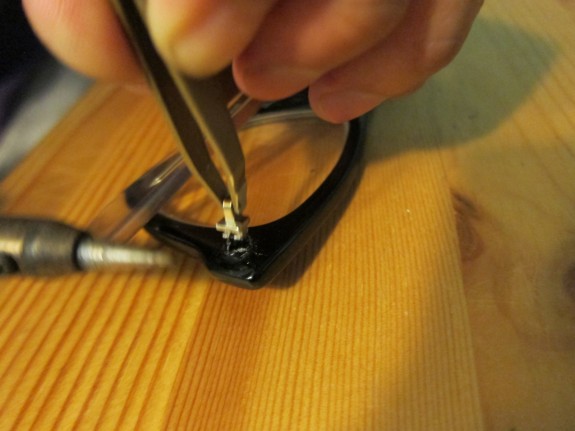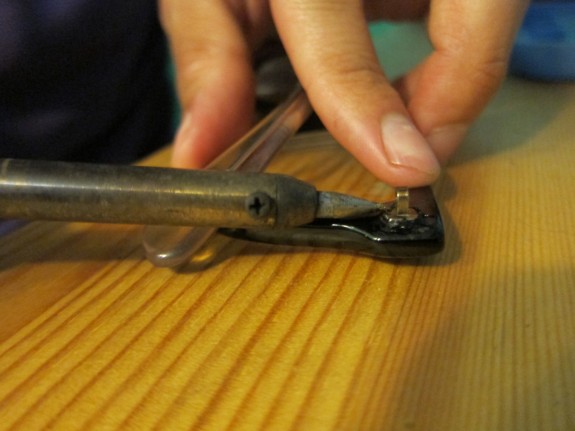
I’ve broken numerous pairs of sunglasses at the hinge where the temples connect to the rest of the frame. As frustrating as it was to just toss the otherwise useful glasses, it just seemed like too much hassle and expense to try to fix them. The surfaces seemed too rough and small to solder the broken hinge pieces back together, and how could you replace the entire hinge when it’s embedded in plastic? A friend really liked the look of a cheap pair of sunglasses, so she had them converted to eyeglasses by an optician, an operation that was cheaper than normal frames, but expensive enough to warrant trying a little harder to break the broken hinges.
It turns out it was relatively painless to replace the broken hinge with one from an inexpensive pair of sunglasses.
What you’ll need
- A broken or cheap pair of sunglasses from a thrift store, gas station, or a broken pair you have lying around. Make sure that the way the hinges mount match the glasses you want to repair and that the size of the hinge matches the connector on temple piece.
- Soldering iron machine
- Metal tweezers
- Small screwdriver
Step 1: Remove the temples from the donor glasses
Using the small screwdriver, remove the temple pieces from each side of the donor sunglasses. This will make it easier remove the hinges. When doing this, try sliding the temple piece of the glasses you’re going to fix onto the hinge of the donor glasses, to make sure they’re compatible.
Step 2: Remove hinges from the donor glasses
We’ll repeat this process to remove the broken hinge from the glasses we want to fix, so this is a good chance to practice being steady with the soldering iron, applying the right amount of heat, and removing the hinge with minimum damage to the frame, before working with our good frames. Hold the tip of the soldering iron to the hinge piece, being careful not to touch the plastic. With your other hand, grip the hinge with tweezers. As the plastic around the hinge melts from the heat transfer, gently pull the hinge up and out of the frame, trying to pull as straight as possible. I didn’t have to heat the hinge very long to melt the plastic enough to extract the hinge.

Repeat this process with the other hinge to practice your technique and to have an extra part in case you drop and lose one hinge.
Step 3: Remove the hinge from the glasses you’re repairing
Remove the broken hinge from the glasses you’re repairing, using the same process that you used to remove the hinge from the donor glasses.


Step 4: Replace the broken hinge
Grip one of the hinges from the donor glasses with the tweezers and position it in the hole left where the broken hinge was removed. Try to hold it as straight and flush with the rest of the frame as possible.

With your other hand, touch the hinge with the tip of the soldering iron until the plastic of the frame melts around the replacement hinge. Be careful not to melt the plastic too much or push the hinge too deep into the frame. If needed, use the tweezers or the soldering iron tip to adjust the position of the hinge.

Step 5: Reattach the temple pieces
Using the small screwdriver, replace the temple piece. You’re done! You’ve just saved your favorite pair of glasses from the landfill.








